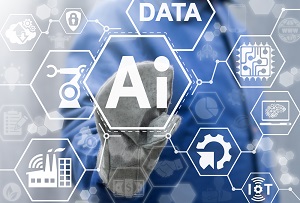Artificial intelligence (AI) isn’t joining the dots. Sure, content process automation tools are increasingly able to recognize documents and their contents. They can identify documents as invoices and detect and store data such as company name or invoice number. They might even have the intelligence to be able to put the data into the correct database or trigger an action such as a payment. But that is where the story ends.
AI in the enterprise is ripe for a much greater level of integration and wider contextualization. When intelligent software can make links between data – and integrate documents, data and systems – that will fuel better decision-making. If the company’s AI-enhanced knowledge bank is enriched by every document that passes through it, creating an exploitable, re-usable depository of knowledge, the path to a single customer view will be so much smoother. This approach is called “contextual AI”.
Contextual AI in action
In practice, once an incoming document has been identified, an AI-enabled content services platform would have multiple options. It might pay an invoice from a recognized supplier without the need for manager approval – resulting in faster payment for a loyal supplier. It could apply discounts and other incentives to reward customer loyalty. It might support HR by synthesizing data on sickness days, holiday bookings, or meeting requests, to flag up employees who may be feeling dissatisfied, giving HR the opportunity to prevent valued talent from leaving.
A broad range of enterprise applications have long promised to provide this information. But there are two major barriers to getting real value from traditional enterprise systems. The first is that the systems often depend on proactive human input of information. And, secondly, there is a failure to join the dots. Accounts knows that a company is a bad payer. IT support knows that there are lots of outstanding tickets and the customer is not happy. And yet the sales team is unaware – wasting time trying to sell to that company.
Composable AI is the future
Advanced, AI-enabled content management that transcends a single application or department is needed here to drive better decisions and more timely interventions. Single application AI will have a very limited shelf life. It is a better idea to decouple AI from individual applications and adopt an open architecture, which supports any combination of current and future AI options on a ‘composable’ basis.
The transition to contextual AI could not be more timely. Companies across the world are struggling to recruit and retain staff. As a result, many businesses are failing to perform to their potential. There is a pressing need to exploit AI and machine learning to support the human workforce and deliver strategic goals. That can only happen when composable and contextual AI supports enterprise-wide decisions.
About the Author

Dr. John Bates is SER Group’s big-hitting new CEO, a tech visionary, automation expert and experienced CxO with a PhD in computer engineering from Cambridge University. SER Group is a leader in Intelligent Information Management, headquartered in Bonn, Germany.
Sign up for the free insideBIGDATA newsletter.
Join us on Twitter: https://twitter.com/InsideBigData1
Join us on LinkedIn: https://www.linkedin.com/company/insidebigdata/
Join us on Facebook: https://www.facebook.com/insideBIGDATANOW





Speak Your Mind